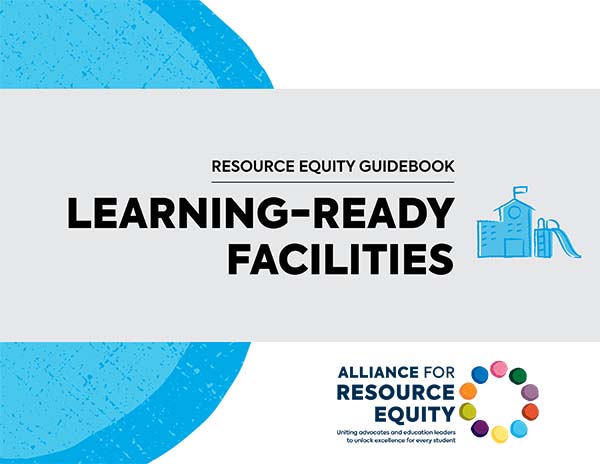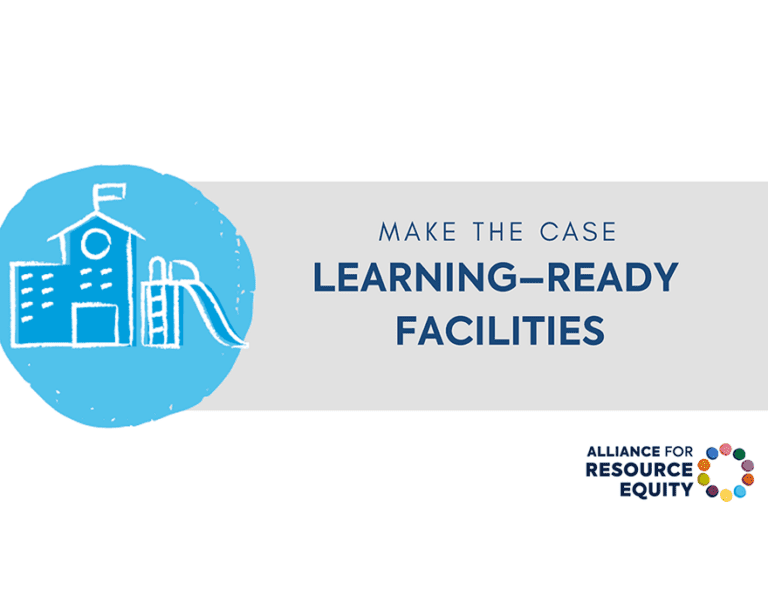Common Causes of Inequity
- Insufficient funding: When overall funding levels are insufficient or inflexible, it can limit a district’s capacity to maintain high-quality learning facilities and equipment for all students.
- Lack of public engagement and accountability: Without consistent, equitable, and transparent community engagement in decision-making, learning facilities will not meet the needs of students and families.
- Limited staff capacity and expertise: Without the necessary time or expertise, staff may find it challenging to effectively use equipment and technology in ways that facilitate students’ learning and meet their distinct needs.
Key Questions to Explore
- What are average scores on district-administered facilities condition assessments? Do scores differ across schools?
- What percentage of teachers in the district report being able to access high-quality equipment (like labs, technology, and classroom furniture) for all students who need it?
- How do teachers’ reports of access to high-quality equipment differ across student groups and/or across schools?
What Does the Data Say About Learning-Ready Facilities?
Our interactive data resource will help deepen your understanding of how dimensions of resource equity like Learning-Ready Facilities play out in schools and districts across the country. As you navigate these interactive stories, you’ll learn how system shifts can lead to more equitable and better student experiences and outcomes.
Learning-Ready Facilities Resources
Related Dimensions
No single dimension of education resource equity can unlock every student’s potential—but when dimensions are combined to meet students’ distinct needs, they are a strong foundation for unlocking better, more equitable experiences in school.
Explore the Empowering, Rigorous Content dimension because learning environments and equipment are influenced by the courses and curricula offered, and must be accompanied by high-quality instructional materials.




